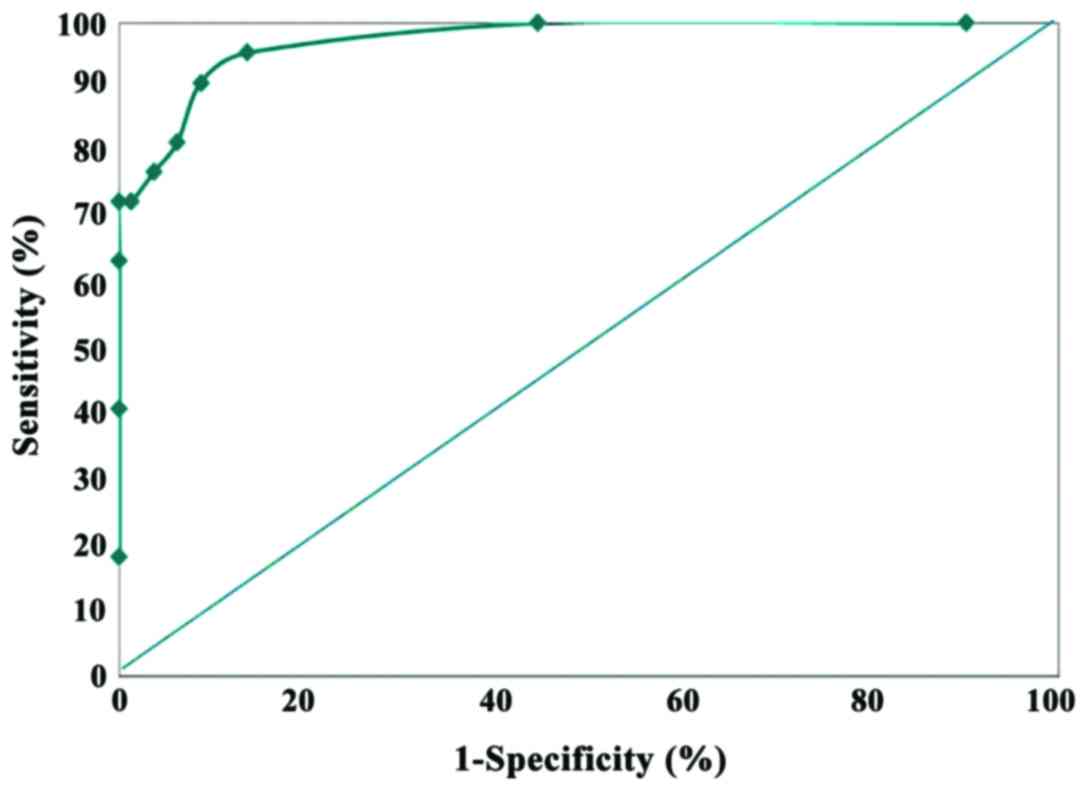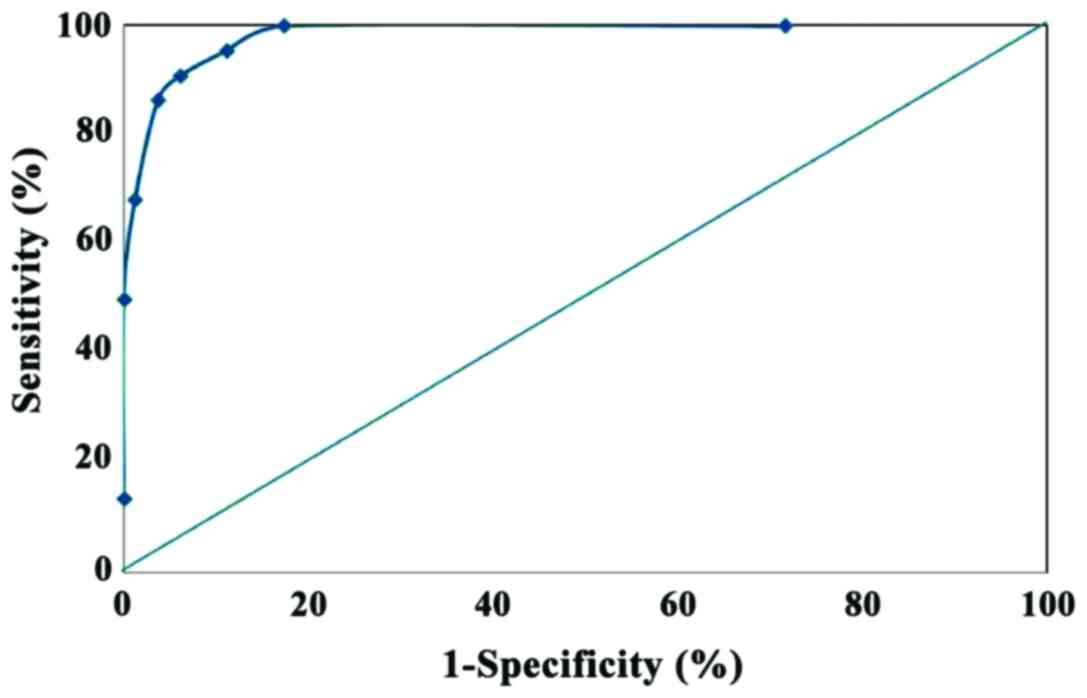The level of urinary IL-18 in acute kidney injury after cardiopulmonary bypass
- Authors:
- Published online on: October 17, 2017 https://doi.org/10.3892/etm.2017.5317
- Pages: 6047-6051
-
Copyright: © Wang et al. This is an open access article distributed under the terms of Creative Commons Attribution License.
Metrics:
Total
Views: 0 (Spandidos Publications: | PMC Statistics:
)
Total PDF Downloads: 0 (Spandidos Publications: | PMC Statistics:
)
Abstract
This study investigated the diagnostic value of urinary interleukin-18 (uIL-18) in acute kidney injury (AKI) after cardiopulmonary bypass (CPB) in clinical practice. A total of 103 patients who underwent CPB were divided into the AKI group and non-AKI group according to the diagnostic criteria of AKI, and we collected the urine samples before and at 2, 4, 6, 8 and 12 h after CPB and the blood samples before and at 12, 24, 48 and 72 h after CPB for detection of the levels of uIL-18 and urinary neutrophil gelatinase-associated lipocalin (uNGAL) in urine samples and the levels of serum creatinine (Scr) in blood samples, respectively. With the results of detection, we measured the sensitivity and specificity of uIL-18 and uNGAL levels at 2 h after CPB in early diagnosis of AKI using the receiver operating characteristic (ROC) curve and area under curve (AUC). There were a total of 22 patients (21.4%) with AKI. From 12 h after CPB, the level of Scr in the AKI group was significantly elevated, and this increasing trend lasted for 60 h; comparisons with the levels before CPB and in non-AKI group showed that the differences had statistical significance (P<0.05). In AKI group, uIL-18 attained the peak level at 2 h after CPB, and the high level lasted for 10 h; comparisons with the levels before CPB and in non-AKI group showed that the differences had statistical significance (P<0.05); 2 h after CPB, the AUC was 90.48, and when the critical value was set as 1.6 µg/l, the sensitivity and specificity was 90.91 and 91.36%, respectively. Although there was a significant elevation in uNGAL level at 2 h after CPB in the AKI group, the level was dramatically decreased as soon as the peak level was attained at 4 h, and the high level only lasted for 8 h; difference between the level at 2 h after CPB and the level before CPB as well as that in the non-AKI group had statistical significance (P<0.05); at 2 h after CPB, the AUC was 83.25, and when the critical value was set as 100 µg/l, the sensitivity and specificity was, respectively 90.91 and 93.83%. The results indicated that after CPB, the level of uIL-18 shows a more promising diagnostic value in clinical practice than Scr and uNGAL in early diagnosis of AKI.












